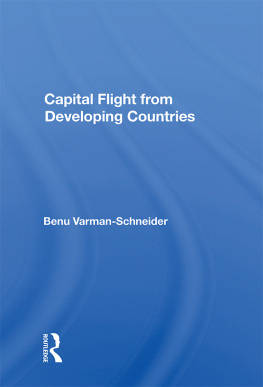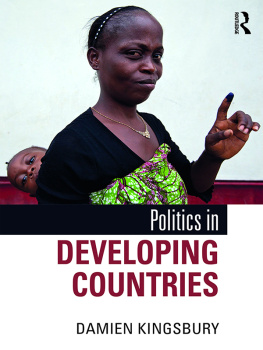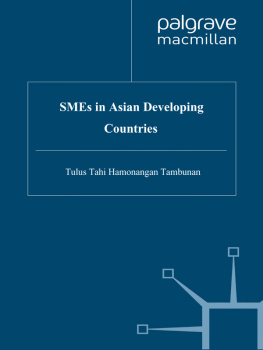Benu Varman-Schneider - Capital Flight From Developing Countries
Here you can read online Benu Varman-Schneider - Capital Flight From Developing Countries full text of the book (entire story) in english for free. Download pdf and epub, get meaning, cover and reviews about this ebook. year: 2019, publisher: Routledge, genre: Politics. Description of the work, (preface) as well as reviews are available. Best literature library LitArk.com created for fans of good reading and offers a wide selection of genres:
Romance novel
Science fiction
Adventure
Detective
Science
History
Home and family
Prose
Art
Politics
Computer
Non-fiction
Religion
Business
Children
Humor
Choose a favorite category and find really read worthwhile books. Enjoy immersion in the world of imagination, feel the emotions of the characters or learn something new for yourself, make an fascinating discovery.
- Book:Capital Flight From Developing Countries
- Author:
- Publisher:Routledge
- Genre:
- Year:2019
- Rating:4 / 5
- Favourites:Add to favourites
- Your mark:
- 80
- 1
- 2
- 3
- 4
- 5
Capital Flight From Developing Countries: summary, description and annotation
We offer to read an annotation, description, summary or preface (depends on what the author of the book "Capital Flight From Developing Countries" wrote himself). If you haven't found the necessary information about the book — write in the comments, we will try to find it.
Capital Flight From Developing Countries — read online for free the complete book (whole text) full work
Below is the text of the book, divided by pages. System saving the place of the last page read, allows you to conveniently read the book "Capital Flight From Developing Countries" online for free, without having to search again every time where you left off. Put a bookmark, and you can go to the page where you finished reading at any time.
Font size:
Interval:
Bookmark:

52 Vanderbilt Avenue, New York, NY 10017
2 Park Square, Milton Park, Abingdon, Oxon OX14 4RN
Product or corporate names may be trademarks or registered trademarks, and are used only for identification and explanation without intent to infringe.
Varman-Schneider. Benu.
Capital flight from developing countries / Benu Varman-Schneider.
p. cm.
ISBN 0-8133-8272-6
1. Capital movementsDeveloping countries. I. Title.
HG3891.V37 1991
332.042dc20 91-9817
CIP
memory of my dear husband, Wolfgang Schneider
- l25
Introduction
- a minimum requirement of imports to sustain a given rate of GNP growth and
- an actual or potential ceiling on export earnings which is insufficient to finance the required imports.
| One-way flows | Two-way flows | |
| Economic risks and returns | Natural resource endowments | Differences in absolute riskiness of economies |
| Terms of trade | ||
| Technological changes | Low correlation of risky outcomes across countries | |
| Demographic shifts | Differences in investor risk preferences | |
| General economic management |
Font size:
Interval:
Bookmark:
Similar books «Capital Flight From Developing Countries»
Look at similar books to Capital Flight From Developing Countries. We have selected literature similar in name and meaning in the hope of providing readers with more options to find new, interesting, not yet read works.
Discussion, reviews of the book Capital Flight From Developing Countries and just readers' own opinions. Leave your comments, write what you think about the work, its meaning or the main characters. Specify what exactly you liked and what you didn't like, and why you think so.







